Onboarding
Onboarding is an employee’s first experience in a new job. We all know that first impressions count, which is why HR teams need to thoughtfully design their onboarding experience. Of course, the onboarding process varies according to an employee’s role and the nature of the company. But there are still some solid onboarding best practices that will allow you to maximize employee KPIs and boost productivity, even in the long run.
What Is Employee Onboarding?
Employee onboarding is the process of introducing an employee to a new job and organization. There are some companies where tasks are relatively simple, such as in the hospitality industry, and onboarding is therefore minimal. However, a sophisticated role in a large organization requires extensive onboarding–and it must be effective, to ensure both employee and company success. To get you going, here are the most crucial elements of any onboarding program:
- Procedures
During this stage, HR and the employee deal with all of the information connected to salaries, benefits, insurance, workplace responsibilities, and schedules. Some organizations use presentations and printed information for a worker to reference at a later time if they wish.
- Resources
Physical working space, equipment, phones, access to information systems, and facilities are provided and set up. Other employee resources, such as a personal HR rep and ombudsman, might be discussed at this stage as well.
- Organizational Structure
A new employee will meet their direct supervisor and team at this point. It’s also possible to introduce the department leader and other employees with whom a worker will need to communicate. In large companies, HR might explain the company hierarchy through visual tools, which is an important step for helping the employee understand exactly what the organization does and how it functions.
- Company Culture
The exact nature of a company’s culture, and how it should influence an employee’s behavior, might take a long time to really understand. But the onboarding stage is a good opportunity to introduce the mission and values to at least set the tone for later on.
- Training
There is some debate about including training in onboarding procedures. After all, if an employee was just hired based on their skills, why would they need training already? There are many reasons:
- Missing technical skills, particularly for proprietary technologies and complex third-party software
- Soft skill gaps in case the organization has identified certain organizational competencies
- Skills that are “nice to have”, although not critical for a role, that might be part of a continuous professional development program
Why Is Effective Onboarding Important?
Creating a feeling of employee engagement for veteran workers is enough of a challenge. For new workers, it is even more critical. People often start off in a company without knowing anybody, confused about how to do their tasks properly, and don’t always have an experienced coworker to ask. This reality is reflected in statistics:
- 28% of employees leave their job after three months due to poor onboarding experiences
- After onboarding, 21% of employees feel that their actual job is different than the one they applied for, and 20% are confused about their everyday duties
- The greatest challenges faced by HR professionals are talent acquisition (44% of respondents) and onboarding/offboarding (32% of respondents)
By comparison, an effective onboarding process results in faster time-to-productivity, higher engagement, and lower turnover.
How Long Does an Onboarding Process Take?
Some employees are ready to go after a few days, while others, particularly those in leadership positions, can take months. In organizations with programs like cross-functional training and job rotation, onboarding is continuous as a way for high-potentials to learn as much about a company as possible. But the schedule for completing a proper onboarding program is a matter of time-to-productivity, and should not be rushed (see below).
Onboarding Best Practices
With so many possible organizational benefits, effective onboarding deserves careful attention. To make the most of this opportunity, it’s worth familiarizing yourself with proven onboarding best practices:
- Pre-boarding
Giving the new hire a head start on registering can save time and HR resources. Many of the forms that are completed by new employees are self-explanatory, so it’s a good idea to send information packages to them for completion, along with a help line connection for any questions. You might even consider virtual paperwork that can be modified digitally by the employee.
Aside from practical matters, pre-boarding gives you a chance to already integrate the employee with the organization. Start them off with a list of important contacts and company details, and provide access to online materials that would be part of regular onboarding. In addition, make sure to provide more details about their tasks in order to avoid the confusion about roles and responsibilities that new hires often experience.
- Virtual Meeting Technology
It’s important for new hires to attach faces to names and roles. This can be a challenge in companies that are distributed geographically or where managers are often on the road.
Virtual meeting tools allow you to make introductions during onboarding instead of piecemeal and dependent on when stakeholders are free. You can arrange one-on-one video calls with essential leaders and managers, and group calls with team members. The focus should be on making new people feel welcome and providing ways of giving them advice and support.
- Hands-On Training Opportunities
Job shadowing and other practical learning methods are ideal for onboarding. They let new hires move beyond the theoretical. This sometimes means that their tasks are not exactly as they had imagined, and can also expose skill gaps for immediate L&D training. In addition, actually working with peers and managers is a great way to make essential contacts as the worker acclimatizes to their new role.
- A Culture of Advice and Support
Even a new hire who understands their role and has the right skills will benefit simply by connecting socially with their team and leaders. Beyond setting up initial greetings, HR should strongly encourage employees across the board to proactively welcome recent hires. This will build a more comfortable feeling for all stakeholders and make for better integration.
This step is even more important for new hires who are unsure of how to behave or what their job entails. Leaders should identify those on their team who have the temperament and knowledge to act as occasional guides. Managers should also set aside a few extra hours to handle the questions that most new employees have.
Another tool for establishing a culture of support is a new employee handbook. This can be a valuable resource for workers who don’t feel comfortable asking a lot of questions (or don’t even know which questions to ask), or for when all of the experienced employees are busy. Make sure to update this document based on employee feedback about gaps and wrong information.
- Mentoring
In addition to helpful peers and managers, an internal mentor allows:
- One-on-one, dedicated support
- Practical, everyday advice from an experienced employee
- A valuable social connection with the ability to access more support resources
- An accountability partner to ensure that the new worker is on the right path
- HR Involvement
The human resources department is in charge of organizing the onboarding process, but should also play a direct role in supporting new hires. This includes regular check-ins that cover everything from social acceptance to problems with payroll. To improve onboarding for the next wave of new employees, HR should also ask for feedback regarding a worker’s experience so far. Lastly, this is an ideal time to start discussing employee development programs, perhaps by explaining career progression for workers in similar roles and what KPIs the new employee should aim for.
Onboarding vs. Orientation
Sometimes, companies use the term “orientation” instead of onboarding, but they are not the same. The nature of employee orientation can take two forms:
- First day activities, often focused on the resource and procedural activities as listed above
- A complete but relatively short introduction to the company, instead of the longer process that is associated with onboarding (used when, for example, management decides there is no need for extensive information or resources)
Artificial Intelligence and Onboarding
AI is a major consideration across departments, including HR. Many companies are integrating artificial intelligence with onboarding functions. In various ways, AI is ideal because it is great at handling repetitive tasks. Companies that onboard many employees at the same time, or in different geographical areas, can use AI to:
- Automate form completion and system access
- Guide and answer employee questions with a chatbot
- Alert relevant departments and managers if they need to participate
But designing onboarding processes using artificial intelligence is no simple job. The challenge is to invest the effort upfront to deliver a seamless experience. For example, automating computer access is a complex task that has many failure points. It requires various stakeholders to ensure that all the necessary software packages are available for the right people, security procedures are followed, and the user experience is simple.
L&D Is Essential for a Quality Onboarding Experience
The onboarding experience does not end when the formal process concludes. Instead, an employee is truly acclimatized when their productivity level reaches their department’s expectations. According to HR Executive, average “time-to-productivity” occurs before 35 days.
Timing Is Crucial for Time-to-Productivity
Should you rush? Of course not. An onboarding program needs to be designed according to the role for which it is intended. Factors like employee experience and existing skills, operational complexity, and resource limitations are important considerations.
So, besides the organization’s bottom line, why is time-to-productivity important for HR goals? Here are a few of the reasons:
- An onboarding process that takes too long can result in boredom, mistakes, and low morale, which in turn causes stress and turnover
- During the time it takes for a new hire to get up to speed, other employees must make up for lost productivity or else see a drop in performance
- On the other hand, a process that is too rapid results in stress and an employee who is not ready for their job
Learning and Development as the Key to Good Onboarding
So far, we’ve looked at best practices and artificial intelligence as ways to promote effective onboarding. But, in essence, what is an employee doing during the onboarding period, aside from filling out forms? They are learning. To this end, learning and development systems provide the ideal tools for delivering an optimized onboarding process by, for example:
- Personalized instruction through technology-based techniques. For instance, adaptive learning systems dynamically adjust the pace of training according to individual performance; gamification introduces an element of fun to a course; and microlessons allow employees to break up the material into sections that are easier to understand.
- Setting an automated learning schedule for the new hire to follow. Instead of being herded around by HR staffers to different online and offline instruction, an L&D system can give them course material and information.
- Customized courses according to skill level. Some new employees start off with certain skill sets that are already complete, while others need instruction. L&D platforms can be used to determine the level of ability for individual workers and adjust their training accordingly.
- Learning communities and resources. One of the best practices mentioned above is support; and online communities are an accessible and convenient method for its delivery. Companies can also build knowledge bases for new hires by using recommendations from employees who have already completed the process, examples of a predecessor’s work, and job-specific tips and tricks.
Get On-Board with Growthspace
New employees are going to have skill gaps. To ensure that this does not frustrate your teams and demotivate the employee, use Growthspace for precision skill development. Through a platform that’s focused on personalized L&D and growth sprints, Growthspace delivers the right skills in minimal time so that employees can get back to the new job at hand.














